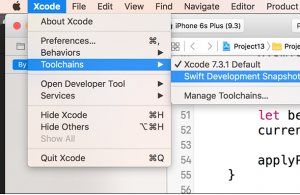

If you want to see the 61 new commands available to you, they’re all in /Library/Developer/CommandLineTools/usr/bin/ but we have also listed them alphabetically below for convenience: Note that directory is the root /Library of Mac OS, not a user ~/Library directory. You can browse through that directory if you want to, or you can just have awareness of it just in case you want to modify or adjust any of the package at a later time.

Enjoy your new unix command line toolkit! What Installs with Command Line Tools and Whereįor those interested in knowing the details of what is installed on their Mac and where it’s going, the entire command line toolkit package gets placed in the following directory:
#Install clang for mac install#
This also means you can compile and install things from source code directly without having to use a package manager. Assuming the installation went uninterrupted, the command will execute as expected. The installer goes away on its own when complete, and you can then confirm everything is working by trying to use one of the commands that were just installed, like gcc, git, svn, rebase, make, ld, otool, nm, whatever you want from the list below.
#Install clang for mac mac os x#
Installing Command Line Tools in Mac OS X Mac users running prior versions of Mac OS X can continue to directly install Command Line Tools and gcc (without Xcode) through a package installer available through the Apple Developer website as described here. This guide is geared towards MacOS Monterey 12, macOS Big Sur 11, macOS Catalina, macOS Mojave 10.14.x, 10.13 High Sierra, 10.12 Sierra, OS X 10.11 El Capitan, OS X 10.10 Yosemite, and Mac OS X 10.9, and newer releases.


 0 kommentar(er)
0 kommentar(er)
